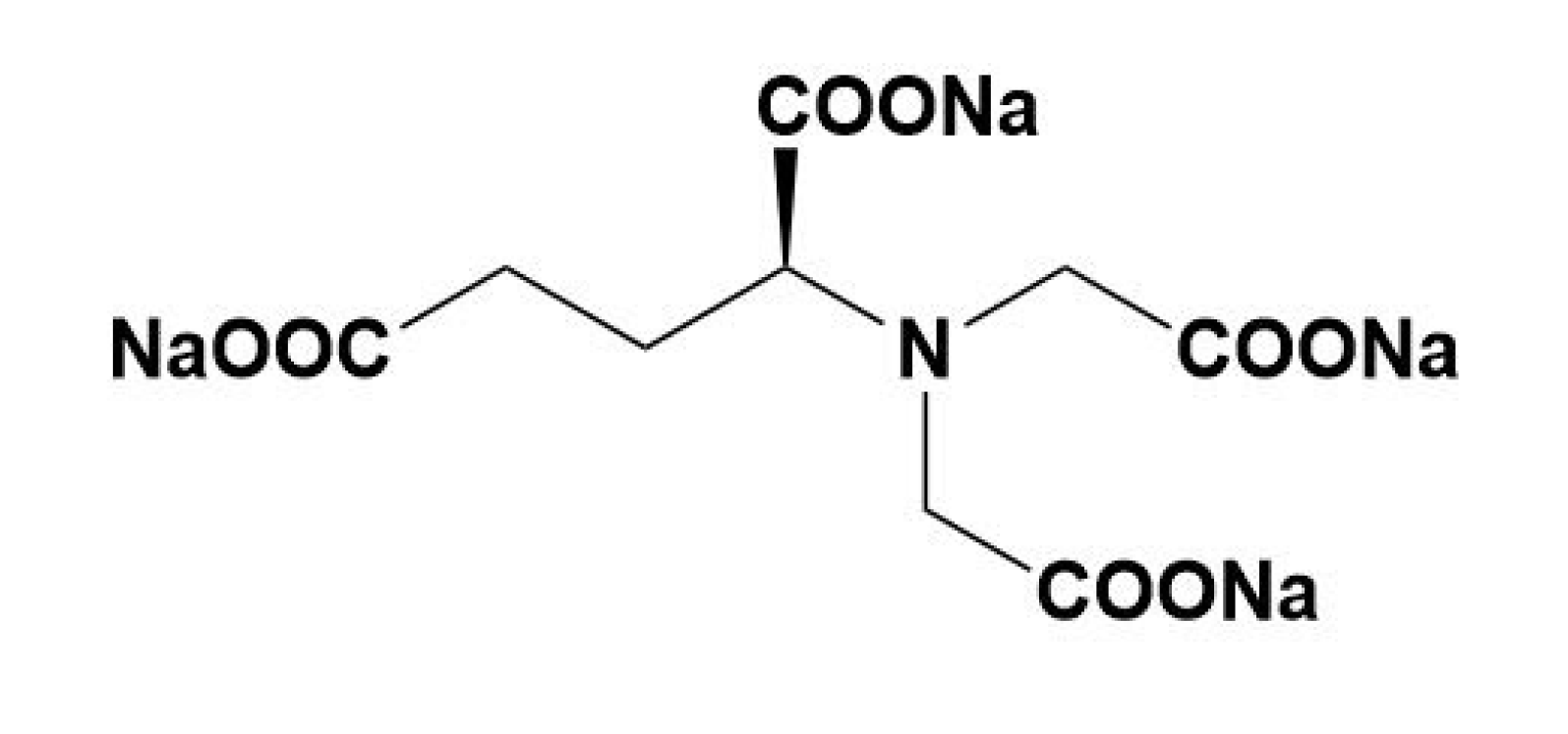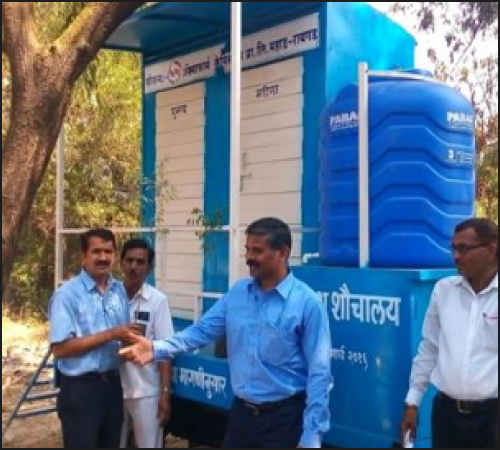Glutamic acid di-acetate tetra sodium salt - GLDA Na4
| CASNo. : 51981-21-6 | Molecular Weight: 351.1 |
| Molecular Formula: C9H9NNa4O8 |
Brand Name: AQUACID 2014 EX and AQUACID 2015 EX
|
Structural Formula:

Highlights – Glutamic acid di-acetate tetra sodium salt -GLDA Na4
Metal ion challenges across various industry
Metal ions influence chemical processes as well as performance of many products. A wide range of problems associated with metal ions can be solved using chelating agents. Historically EDTA, NTA were the work horses of many industrial processes such as homecare, detergent, industrial cleaners, etc. However, tetrasodium ethylenediaminetetraacetic acid (EDTA) is non- biodegradable chelating agent and NTA is carcinogen. As a result, the need to develop new green chemistry arose. The new biodegradable chelant, Glutamic acid diacetate (GLDA) is derived from renewable sources with better ecological and toxicological profiles.
Key unique differentiations offered by Glutamic acid diacetate (GLDA)
- Environmentally Friendly Technology – Glutamic acid diacetate (GLDA) is classified as readily biodegradable (>60% degraded within 28 days) according to the internationally recognized OECD 301D test.
- Wide range of operating window – Glutamic acid diacetate (GLDA) operates across wide range of pH making it conducive to use in strongly alkaline hard surface cleaning applications that includes food processing, kitchen cleaning and automatic dishwashing products.
- Formulation flexibility, compatibility and Synergy– There is an increased interest in the use of Glutamic acid diacetate (GLDA) in disinfectant formulations. Like tetrasodium ethylenediaminetetraacetic acid (EDTA), Glutamic acid diacetate (GLDA) can be used together with biocides to improve the biocidal performance of a disinfection system.
- Offers unique opportunity for skin friendly personal care product development – Glutamic acid diacetate (GLDA) is also used in personal care products. GLDA is free from genetically modified raw materials and is not irritating to skin or eyes, these properties are suitable in the development of new personal care products.
- Glutamic acid diacetate (GLDA) solutions for broad portfolio of industrial applications – Glutamic acid diacetate (GLDA) is instrumental in reducing the detrimental effect of metal ions in various industrial processes such as paper manufacturing, personal care formulations, food processing industry, pharmaceutical formulations, metal working area etc.
Specifications- Glutamic acid di-acetate tetra sodium salt -GLDA Na4
| Product name | AQUACID 2014 EX | AQUACID 2015 EX |
|---|---|---|
| Physical form | Liquid | Liquid |
| Appearance | Pale yellow clear liquid | Pale yellow clear liquid |
| Assay (wt%) | 38-40 | 46.5-47.5 |
| pH (1% w/v) | 10-12 | 11-12 |
| Liquid density (kg/m3) | 1360-1400 | 1400 to 1440 |
| Viscosity (mPa.S) | 43 | 250 |
Alternate name/synonyms- Glutamic acid diacetic acid glda
-
- Glutamic acid N,N-diacetic acid sodium salt
- Glutamic acid diacetate tetrasodium salt
- L-Glutamic acid-N,N-di(acetic acid) tetrasodium salt
- N,N-Bis(carboxymethyl)-L-Glutamic acid tetrasodium salt
- N,N-Bis(carboxymethyl)glutamate tetrasodium salt
- N,N-Bis(carboxymethyl)glutamic acid tetrasodium salt
- Tetrasodium GLDA
- Tetrasodium N,N-Dicarboxymethyl-L-glutamate
- Tetrasodium N,N-bis(carboxymethyl)-L-glutamate
- Tetrasodium glutamate diacetate
Frequently asked questions
What is the use of GLDA?
GLDA (Glutamic acid diacetic acid glda) is a green chelating agent
Why choose Aquapharm as a Glutamic acid diacetate (GLDA)manufacturer?
Aquapharm’s Glutamic acid diacetate (GLDA) is derived from renewable sources with better ecological and toxicological profiles
Chelants have ability to complex free metal ions


























